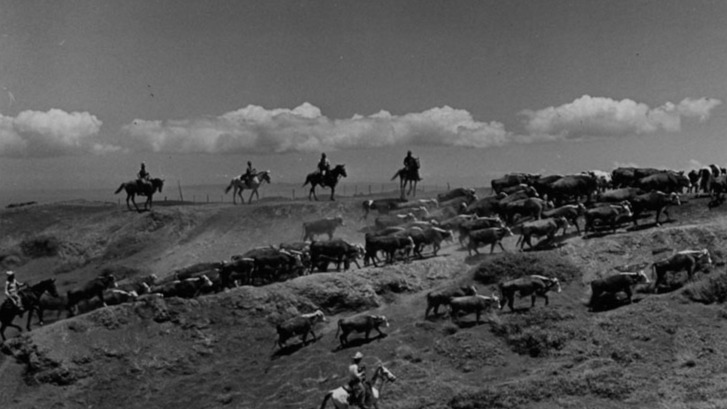
- Home
- Paniolo Hall of Fame
- Inductees
- William Malulani Kaleipaihala Beckley

Year Inducted: 2022
Parker Ranch | Hawai'i
William was born in 1814. He was the eldest child of Captain George Beckley, creator of the original Hawaiian Flag, and High Chiefess Ahia Kalaikumaikiekie. William was hanai to Queen Keopuolani and was brought up together with Kauikeaouli, who would later become King Kamehameha III. William traveled with his father and mother as a child back and forth between Hawai’i and Veracruz, Mexico where his grandfather, on his father side, owned a family ranch.
In 1793 - 1794, cattle were given to King Kamehameha I. He then placed a 10-year kapu on the herd to allow it to grow. Years later, there were roughly 25,000 wild cattle and an additional 10,000 domesticated cattle. This is when the kapu was lifted by Kamehameha III. William was placed in charge of shooting and roping the wild cattle. William, and his younger brother George, moved to Waimea and built their lives there. They became known as “The Beckley Boys” and with their help, Kamehameha III established trade in cattle hides with Spain. It became a thriving business.
William, already in charge of the King’s Cattle on Hawai’i Island, was appointed Konohiki of Waimea, as well as manager of all the cattle there belonging to the King and the government. In 1844, William married High Chiefess Kahinuokekuaokalani-i-Lekeleke, who is the daughter of High Chief Ho’olulu. They had three children, Frederick William Kahapula, Maraea Angela Kaha’awelani, and George Charles Mo’oheau.
William had his own portion of land, identified as Wa’awa’a, Waikani, and also a house lot at Lihu’e. Additionally, his wife was also awarded the land of Waiemi. William called his portion of land in Waimea “Little Mexico.” He raised thoroughbred horses and was also the first to import an Arabian horse to the islands. “Little Mexico” is now part of Parker Ranch. Within Parker Ranch, just at the bottom of a small hill, there are three graves that are barely noticeable. These graves are said to be the graves of William, his mother Ahia, and his wife Kahinu.
William converted acres of land to pasture and with holding pens. In 1847, William was overseeing the branding of wild cattle for the Government of Hawai’i. This was the same year that John Palmer Parker purchased his first acres of land which would then become Parker Ranch. It was said that, as Konohiki, William was lenient. He never disputed a claim and was in most cases, the principal witness for lands that he had jurisdiction of.
Circling back to the reference to Mexico within the name of his land “Little Mexico”. William, as Kamehameha III’s ranching partner, was the original recruiter of Spanish vaqueros to Hawai’i from Veracruz, Mexico. It was William’s understanding of Spanish customs and his application of them here on Hawai’i Island that provided the influence that we see so much of in our Hawaiian paniolo customs today.
William passed away on March 16, 1871. He’s left a legacy that has influenced so much of the Paniolo culture here in Hawai’i. He was a part of it all from the very beginning.